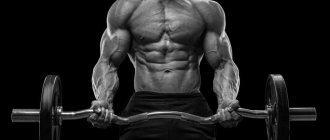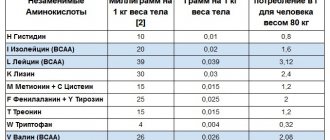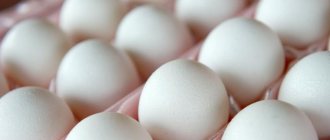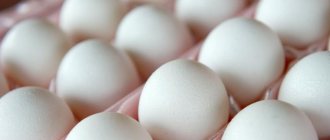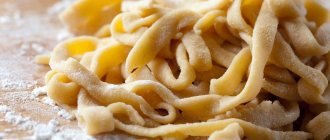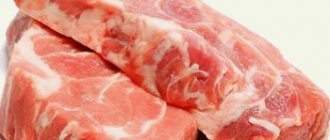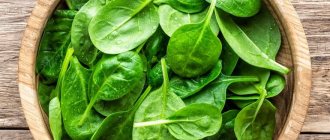Compound
Chicken breast has the following digital content of nutritional ingredients and nutrients:
- Proteins – 23 g
- Fats – 0.5 g
- Carbohydrates – 0.4 g
- Calorie content – 110 kcal
- Vitamins – A, C, H, PP, group B
- Minerals – sodium, magnesium, iron, potassium, sulfur, cobalt, copper, selenium and others
Why, when talking about protein, is the emphasis placed on the finished product? Because there is slightly less protein in the raw product - about 23 g per 100 g. During the heat treatment, the amount of water decreases slightly, but the amount of protein remains unchanged, respectively, the percentage in the finished meat increases.
It should also be noted that chicken breast protein is easily digestible.
What part of chicken should you eat for maximum benefits?
The cut of chicken you choose for your meal depends on your health and fitness goals.
While all parts of chicken are excellent sources of protein, some have less than others. Extra fat in the thigh, leg, and wings may benefit some goals but hinder others.
If you are trying to lose weight, then chicken breast is the best choice for you. This part contains fewer calories and more protein.
People who want to maintain their muscle mass also benefit from eating chicken breast. It contains a high amount of protein, which is the most important factor when it comes to choosing which part of the chicken to eat. For example, chicken breast is ideal for people involved in bodybuilding.
However, people who follow low-carb diets may benefit from eating the fattier parts of chicken, as they need more fat in their diet.
If your goal is to build muscle and gain weight, you need to eat more calories than your body burns. People who fall into this group may benefit from eating fattier parts of chicken as they contain more calories.
Knowledge of the amount of proteins contained in chicken breast is necessary for people who want to lose weight, as well as “cut,” that is, reduce fat mass without sacrificing muscle mass.
A balanced human diet contains about 50% carbohydrates, 30% proteins, 20% fats. If it is necessary to lose weight due to the fat component, this ratio should shift in favor of B and look like this:
- proteins – 45%;
- fats – 15-20%;
- carbohydrates – 35-40%.
Therefore, it is important to give preference to products containing large amounts of B, for example, chicken in any form.
But when following a diet, you should remember not only the B content, but also the fat in the meat and its total calorie content. Optimal ways to cook chicken for losing weight:
- boiling;
- baking;
- steaming.
Before you start cooking the chicken, you need to remove the skin. This part is very fatty and high in calories, so it is not suitable for dietary nutrition.
Experts agree that animal protein is the most beneficial for the body. It comes along with carbohydrates and fats, forming the basis of an athlete’s proper diet. It has already been proven that such protein guarantees the correct flow of metabolic processes and accelerates muscle growth.
We invite you to familiarize yourself with the Tethered method of keeping cattle
The available amount of protein in chicken breast at least partially covers the body's needs for building material. At the same time, the product is not used as a source of energy, because it has a low energy value. In addition to protein, it also contains other elements, but in low quantities. How many carbs are in chicken breast?
In addition to the main “trinity”, this meat also contains a number of other key elements:
- vitamins - retinol, thiamine, choline, pyridoxine, folic and ascorbic acid, biotin and others;
- minerals - calcium, phosphorus, chlorine, sulfur, sodium, potassium and magnesium;
- trace elements - zinc, fluorine, iron, cobalt, manganese, iodine and many others.
Protein in dark meat
The term "dark" is used to describe cuts of meat that are reddish-brown in color.
The sections have this pigment due to the high concentration of the protein myoglobin (1).
Because myoglobin helps transport and store oxygen in muscle cells, dark meat is typically found in more active muscle groups, such as chicken and turkey thighs and drumsticks (1).
Drumstick meat
A 100-gram serving of cooked chicken drumstick contains slightly less protein than the same serving of turkey drumstick—about 2.2 grams (6, 7).
- Chicken drumstick : 27 grams
- Turkey drumstick : 29.2 grams
This slight difference in the amount of protein makes both of these products virtually identical in terms of nutritional content.
Thigh meat
Thigh meat from both chicken and turkey contains slightly less protein than drumstick meat. Sometimes the thighs are sold still attached to the drumsticks - in one piece (leg).
A 100-gram serving of turkey thigh meat contains about 2.5 grams more protein compared to chicken (8, 9):
- Chicken thigh : 26 grams
- Turkey thigh : 28.5 grams
While turkey thigh meat is technically the richer source of protein in this comparison, 2.5 grams of protein per 100 grams is unlikely to make much difference overall. Either choice will still qualify as a good source of high-quality protein.
The protein content of chicken and turkey drumsticks and thighs is almost the same, although turkey meat contains just over 2 grams more protein than chicken meat per 100-gram serving.
What foods contain protein?
Animal Protein Sources
Chicken breasts are perhaps the record holder for the ratio of protein to fat - for 170 grams of meat there are only 3 grams of fat and about 40 grams of protein. Naturally, we are talking about chicken meat, steamed or boiled. 100 grams of both chicken and turkey breasts contain 22-25 grams of protein.
Rabbit meat is also rich in protein. 100 grams contain 22-23 grams of protein and very little fat - usually no more than 10 grams. Rabbit meat is healthy and has a good taste. The only drawback of rabbit meat is the difficulty in preparing it.
Offal. Chicken, turkey and rabbit livers, kidneys, hearts, stomachs practically do not differ from meat in the amount of protein they contain - 100 grams of offal contains about 15-20 grams of protein. There is only one “but” - they contain almost 12% fat. This is a great option for those who save their money.
Lean beef contains a large amount of proteins, vitamins B3 and B12, iron, and zinc. However, there is one caveat: such meat contains a lot of dietary cholesterol and saturated fats. 200 grams contain 33 grams of protein and 300 kcal. The downside of “marbled beef” is its price; in today’s realities, it is much more profitable to buy chicken or turkey.
Quail eggs, due to their size, are a poor source of protein. Goose and duck eggs contain a large amount of fat. Therefore, the egg white of chicken eggs is the most popular in the sports environment, it contains the necessary and essential amino acids necessary for building muscle tissue.
The main share of protein is contained in the “white” of a chicken egg. An average-sized egg contains about 7 grams of protein, of which only two are contained in the yolk.
Cottage cheese and dairy products
If you are aiming to consume a large amount of protein, but have some difficulty digesting milk, do not despair. There are a wide variety of other easily digestible dairy products that provide adequate amounts of protein.
Low-fat cottage cheese is considered a rich source of protein - just 100g contains 17-18g of protein. Since this protein is absorbed quite slowly, cottage cheese is eaten at night, thereby providing the body with the necessary amount of amino acids. There is an important nuance: consuming cottage cheese in large quantities slows down metabolism, and if the metabolism is already slow, then it is recommended to eat no more than 100-120 grams of this dairy product per day.
Yogurt and kefir do not contain very much protein - only 3-3.5 grams per hundred, but these products can perfectly act as additional sources of macronutrients.
Cheeses contain an average amount of protein. True, in addition to protein, they are also rich in fats. There are low-fat cheeses, but they are extremely difficult to find on shelves.
White fish
White fish (pollock, whiting, cod or hake) are a valuable source of protein. The leanest variety of such fish contains up to 20 grams of protein per 100 grams of product, despite the fact that its calorie content will not exceed 80 kcal.
White fish is perfect for those who are counting calories or following a diet. It is recommended to buy this fish fresh, but if this is not possible, then give preference to dry frozen fish.
red fish
An excellent source of proteins and healthy fats that support the immune system and have a positive effect on the cardiovascular system. For example, just 100g of Atlantic salmon contains 30g of protein, 9g of fat (of which 3-4g are monosaturated fats).
Unlike white fish, red fish is higher in calories - 210 kcal per 100 g of product. Red fish contains a large amount of vitamin B12, which takes part in metabolism.
Protein is an important component of a balanced diet.
Although it can be obtained from a variety of sources, chicken and turkey are some of the most popular protein-rich foods.
This article explores the question of whether chicken or turkey is healthier and how much protein is contained in these types of poultry.
Useful properties of chicken breast:
It is a source of easily digestible proteins, minerals and vitamins. It contains virtually no cholesterol, so it is recommended for use by people with diseases of the cardiovascular system, gout, polyarthritis, diabetes, diseases of the gastrointestinal tract, ulcers, gastritis, as well as those who are obese. It belongs to the dietary sources of protein, and in its beneficial properties it is second only to seafood.
In addition to its high protein content, chicken breast contains glutamines, which improve the functioning of the human nervous system. Eating chicken meat normalizes fat metabolism, blood sugar levels, blood pressure, stimulates kidney function, and reduces cholesterol levels. The chemical composition of chicken breast will help in the recovery of patients with injuries and damage to soft tissues, for example, after burns, serious fractures, and blood loss.
Chicken breast broth is useful for colds; consuming it increases the body's defenses and strengthens the immune system. This broth is also a product that doctors allow people who have undergone major surgery to consume. It is worth considering that the broth made from skinless chicken breast contains a minimum of fat, which is different from the same broth cooked from other parts of the chicken.
Which is healthier?
Chicken and turkey provide high-quality protein and can be a healthy part of a balanced diet. But keep in mind that too much of any given food, including meat, can have a negative impact on your health (10).
Including a moderate amount of chicken or turkey in your diet can be a healthy way to meet your protein needs, although protein is not the only nutrient found in turkey and chicken.
Along with protein, you need to consider the calories, fat, vitamins and minerals in the food when deciding which option can best meet your nutritional needs.
Calories and fats
Paying attention to the calorie and fat content of foods may be necessary depending on your health goals.
Fat is an important component of a healthy diet, and poultry contains various types of healthy fats (10).
However, fat is a more saturated source of calories compared to protein. This means that fattier cuts of meat will contain more calories than leaner cuts.
In general, dark meat in both chicken and turkey contains more fat than white meat. This generally applies to other types of poultry.
Dark meat chicken has slightly more fat and calories than dark meat turkey. The same can be said for the white meat of these two types of poultry, as turkey is considered slightly leaner with fewer calories than chicken.
It's also worth noting that if you eat poultry skin, you'll be consuming a lot more calories.
None of this means that either of these two birds is a better choice, but it may be worth considering depending on what you want to achieve with your diet.
Vitamins and minerals
Although there are no significant differences in vitamin and mineral content between chicken and turkey, there may be some changes in the composition of these nutrients between white and dark meat in general.
For example, chicken breast contains more niacin and vitamin B6 than chicken drumsticks, and chicken drumsticks contain significantly more zinc than chicken breast (2, 6).
So if you want to increase your zinc intake, dark meat may be a better option, whereas if you want to increase your intake of B vitamins, then white meat may be more suitable.
When considering dietary options like this, it's good to keep the big picture in mind. Eating a variety of foods and reducing your meat intake may be the best way to provide your body with a variety of nutrients.
Both chicken and turkey can be a healthy part of your diet. In addition to protein, both of these options provide your body with calories, fat, vitamins and minerals. You may prefer any of these pet birds depending on your personal health goals.
Boiled chicken fillet is the main product of most low-carb diets, as it contains a minimum of calories. Unlike chicken drumsticks, wings and thighs, breast contains less fat and tastes almost the same. It is chicken fillet that is popular in the diet of most athletes, as it contains a large amount of animal protein and vitamins and minerals necessary for the functioning of the body.
WEIGHT LOSS STORIES OF STARS!
Irina Pegova shocked everyone with her weight loss recipe: “I lost 27 kg and continue to lose weight, I just brew it at night. » Read more >>
Chicken breast is a dietary food. Knowing the protein content in it, you can easily calculate how much of the product you need to eat. For the normal functioning of the human body, it is necessary to consume 80 grams of protein per day. There are at least 23 grams of protein per 100 grams of finished fillet. To meet the daily requirement, you need to eat 300 grams of this meat, taking into account other products.
Due to its high protein content, breast meat is ideal for reducing body weight without harming muscle mass.
Based on the type of meat preparation, the content of BJU per 100 grams changes as follows:
| Cooking method | Proteins, g | Fats, g | Carbohydrates, g |
| Raw | 23,6 | 1,9 | 0,4 |
| Boiled | 27,6 | 1,8 | 0,5 |
| Smoked | 18,1 | 5,0 | 0,1 |
| For a couple | 23,6 | 1,9 | 0,1 |
| Fried | 25,2 | 7,8 | 1,3 |
| Baked | 24,8 | 1,6 | 0,4 |
| Grill | 19,0 | 7,1 | 4,1 |
Fresh chicken has a lower protein level compared to oven-baked and boiled chicken. This is explained by the fact that during cooking, about 20% of the water disappears. Therefore, a 100-gram fillet after cooking weighs 75-80 grams. As a result, the amount of protein in chicken breast increases after processing.
Fillet is easily digestible and does not burden the gastrointestinal tract. For this reason, you can eat it even in the evening without fear of gaining extra pounds. It refers to the white type of meat, according to doctors, culinary specialists and nutritionists. The dietary product contains much less fat compared to red meat. There is a negligible amount of carbohydrates in it. The red variety includes beef, pork, lamb, and turkey.
The calorie content of raw chicken does not exceed 113 kcal per 100 grams. Skinless breast contains an average of 114 kcal. Depending on the cooking method, sirloin contains the following number of calories:
- boiled - 137;
- smoked - 117;
- steamed - 113;
- fried - 161.8;
- baked - 119.3;
- grill - 166.
Composition of the dietary product indicating the percentage:
- water -60%;
- protein - 25%;
- fats - about 8%;
- the remaining 7% is divided between elastin, collagen, amino acids and protein compounds.
Chicken dishes not only look appetizing, but are also rich in microelements and vitamins. The amount of nutrients per 100 grams of white meat is indicated in the table:
| Vitamin name | Content, mg | Daily requirement, % |
| A1 | 0,073 | 7 |
| B1 | 0,06 | 4,5 |
| B2 | 0,8 | 4,3 |
| B4 | 74 | 14 |
| B5 | 0,85 | 10 |
| B6 | 0,42 | 23 |
| B9 | 0,0043 | 1,2 |
| B12 | 0,00062 | 0,25 |
| C | 1,85 | 3,2 |
| E | 0,19 | 1,5 |
| H | 0,009 | 21 |
| PP | 11,5 | 54,3 |
In addition to the above substances, chicken contains 84.9 mg of magnesium, 62.3 mg of sodium, 75.8 mg of chlorine, 172.5 mg of phosphorus, 295 mg of potassium, 9.4 mg of calcium. The meat contains the following microelements (daily requirements are indicated in parentheses):
- iron - 1.81 mg (9.3%);
- iodine - 6.89 mcg (4.7%);
- cobalt - 13 mcg (118%);
- manganese—0.03 mcg (1.3%);
- copper - 74 mcg (8.3%);
- fluoride - 0.13 mg (8.5%);
- chromium - 8.49 mcg (19.2%);
- zinc - 1.51 mcg (16.8%).
Damage to chicken breast:
It is the chicken breast that contains a small number of blood capillaries, which transport all the beneficial substances and microelements that the chicken ate. In addition to protein, due to this property, it contains very few mineral salts, so if only chicken breast is present in your diet for a long time, there is a risk that the body will use the missing minerals from its own sources, which can affect the health of your teeth and bones. Chicken breast, like other parts of it, can cause an allergic reaction, as they contain the substance histamine.
You can harm yourself by consuming too much protein. This will put a lot of stress on the kidneys and liver and lead to their diseases.
The small amount of fat, which to some extent is a big plus of this meat, is also, on the other hand, a minus. Fats are necessary for humans to produce hormones. If the percentage of fat consumed in the body drops below 20-30%, the necessary hormones will no longer be produced. This will not have a positive effect on your health. What should I do? - let's move on.
The benefits of chicken meat
Nutritionists around the world have long loved this product and are happy to recommend including it in any diet. Chicken meat is not just an excellent source of protein, but also a source of other beneficial substances such as:
- all B vitamins
- vitamin A
- vitamin PP
- vitamin C
- choline, which helps the adrenal glands and kidneys work, and also helps rid the liver of excess fats
- potassium, which helps stabilize blood pressure and has an effect on nerve impulses
- magnesium
- chlorine
- iron
- phosphorus
- sulfur
A very low level of fats and carbohydrates, as well as many useful qualities, give chicken meat every right to be a healthy product that helps:
- recover from serious illnesses and surgeries
- boosts immunity
- good for diseases of the digestive tract, including ulcers and stomach cancer
- This meat is good for preventing heart and vascular diseases
The nutritional value
The first thing worth noting is the low calorie content of this meat. 100 grams of chicken breast contain 113 kcal , of which only 1.9 grams are fat, 23.6 grams are protein, 0.4 grams are carbohydrates.
The minimum amount of protein a person needs is 50-100 grams (based on 0.8-1 grams per 1 kilogram of weight). Therefore, 200-400 grams of breasts are enough to avoid a deficiency. For athletes who need 2-2.5 g of protein per kilogram of weight, this volume is not enough, but the remaining needs can be covered by other products or sports nutrition.
